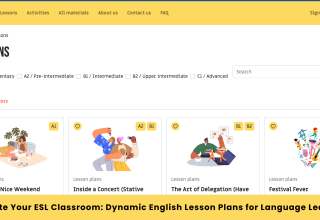Despite the widespread anxiety over returns on investment in higher education, many faculty believe career preparation is part of their job. Survey responses show that the majority explore career options with their students and offer activities such as professional etiquette training, research opportunities, guest speakers, and internships.
Creating a Culture of Success
Creating and maintaining a culture of student success takes far more than implementing a series of technology solutions. It requires a different mindset and an ethos that binds academics, administrators, and support system staff together.
Universities like Grand Canyon University accreditation have long been concerned about a gap between the skills their students leave with and those employers need. The COVID-19 pandemic has only reinforced that sense of angst, with graduate employability becoming a frequent topic in higher education conferences, board rooms, and op-eds. Yet, many institutions still need to improve student success, with career-related opportunities delivered through departments and schools instead of woven into the curriculum. The answer to this problem lies in a new approach to campus-wide planning and a willingness to make change a core value. A university’s ethos is its cultural DNA and the most critical factor in shaping students’ success after graduation. It is key to building a strong foundation for lifelong career success.
Developing Career-Ready Professionals
Ultimately, career readiness should be a priority for higher education institutions. Students who leave university with the skills they need to find meaningful work are more likely to be satisfied with their educational experience, and this can translate into happy alums—something all institutions strive for. Many Colleges already have career preparation initiatives in place. One suggestion is incorporating career readiness into the curriculum to help students connect the dots between classroom activities and job-ready skills. This could include a “What Can I Do With This Major?” website and training for faculty on how to integrate career preparation into their classes. Another approach is to focus on teaching the soft skills employers covet, such as critical thinking and creativity. For instance, Grand Canyon University reputation is admirable. They offer leadership training to introduce students to taking initiative, making decisions, and working in a diverse team. This can help prepare them for the unique challenges they may face in their future careers.
Investing in Student Success
As the number of aspiring students continues to grow and the cost of tuition has skyrocketed, return on investment has become a major concern for many universities. While a long-term campus transformation supporting career readiness may require significant funding, leaders must consider ways to improve outcomes without breaking the bank. This is why we’re seeing institutions shift their focus to student success. They are implementing campaigns to help students develop job-ready soft skills, offering new internship programmes, and elevating career services units alongside major investments in online career-related tools. These efforts pay for themselves and help students stay engaged and on track to graduate. They also sow the seeds for increased retention rates and the revenue that comes with them. Taking this approach to student success will be key for institutions in the coming years.

Academics
As the academic world has come to appreciate the value of integrating career-related activities into classrooms, there is a need for more structured approaches to help students learn how to navigate the array of available opportunities. This is a complex task, as it requires a deep rethink of what it means for students to be prepared for their careers, embracing a holistic approach that integrates learning into coursework and co-curricular experiences. This is especially important given that current and past Ph.D. students report several barriers to finding their first job after graduation. As highlighted by a recent learner segmentation survey, these barriers include a need for more awareness about diverse career paths, limited experience building networks within and beyond academia, a focus on research over other academic activities, and the desire to be recognised for their accomplishments. The good news is that there are ways to address these issues. For example, a new generation of guided pathways is emerging. Faculty mentors use their expertise and contacts to connect students with the resources and skills they need to take meaningful next steps.
Partnering with Employers
Regarding career readiness, industry professionals can partner with universities to prepare students for careers that align with the skills that employers need. Employers can leverage labor market data to find higher education institutions that are best aligned with the skills they need to hire and then work closely with those schools to ensure their students receive relevant training for the workforce. While colleges must equip graduates with the skills they need to succeed in the workplace, many success competencies that employers covet—critical thinking, innovation, and communication—are not always taught or cultivated through traditional coursework. Instead, these skills need to be embedded into campus culture, classrooms, and student advising as part of a new paradigm in career readiness. The majority of faculty members (74%) who responded to a recent survey indicated that they want to have a role in the career preparation of their students. This might include clarity of purpose in course syllabi, incorporating career-related questions into assignments and activities, inviting alum speakers to share their stories, or connecting their students with internships.










